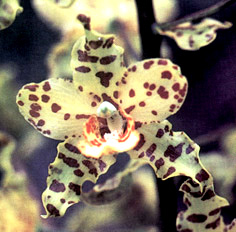
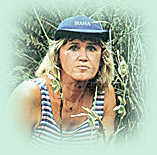 |
Lou
Menezes is forestry engineer, ecologist and botanist of the Brazilian
Environmental Institute - IBAMA. As a conservationist, she dedicated herself
to the study of orchids through the Project Orchids of Brazil. She has
already described many species and varieties, publishes periodically her
articles in national and foreign specialized magazines as well as she
wrote many books on this subject: Cattleya labiata Lindley, Cattleya
warneri Moore, Laelia purpurata Lindley, Genus Cyrtopodium
and now Orchids from the Brazilian Central Plateau. |
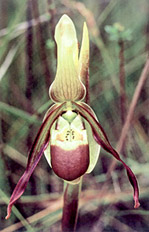 Phragmipedium vittatum |
ON:
Lou, although you periodically publish articles in specialized magazines
in Brazil and abroad only now, with the publication of the book "Orchids
- Brazilian Central Plateau", the global results of your researches
on this region will be within the reach of the orchidists and orchidologists. How many years you spent to get this result? Lou: This book is a result of researches developed all along 15 years. ON: Which is the start of this survey? |
|
|
Lou:
The researches started with the specific studies on Phragmipedium
vittatum and on the genus Cyrtopodium. Lou: This big research has been based on the identification of the species found in the fields, with photographic register, deposit of botanical material in herbariums and international support concerning the access to literature on orchids and, sometimes, even financial supports. |
ON:
Which was the frequency of the visits to those habitats?
Lou: The visits to the habitats were constant all year along and for many years and have finished to be a frenetic quest for the species and varieties. It is easy to understand this since I am emotionally depending on orchids. ON: Which states and regions are included in this research? Lou: The great area of Brazilian Central Plateau includes Brasilia - Federal District, |
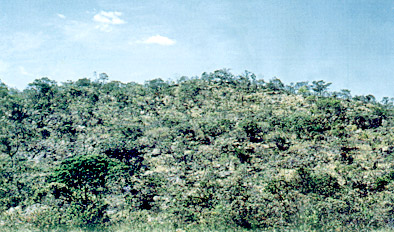 ("Cerrado" with rocky outcrops) |
Goiás,
Tocantins, part of Minas Gerais, São Paulo and also part of Mato
Grosso. ON: Which is the characteristic of the climate in those regions? Is it homogenous, it means, cool and dry winter and hot days during the summer with often rains and the temperature dropping at night ? Lou: The climate is characterized by a dry and humid period, with high temperatures during the day and an expressive drop at night. |
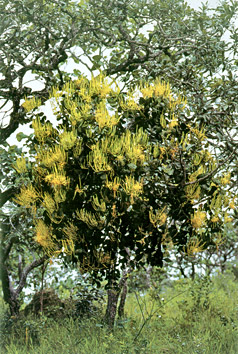 ("Cerrado" - Savannah) |
ON:
The Savannah (cerrado) is a very specific habitat, what could you tell
us about it? Lou: The "cerrado" is a fantastic world of fascination and surprise. The vegetation of the Central-Western Region, which was, in the past, forest and field, is represented predominantly by the Savannah, most known as "cerrado". ON: Is the "cerrado' homogenous or it is formed by many kinds of vegetation? |
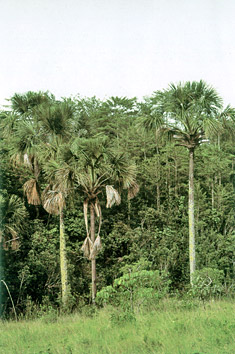 (Marshy forest) |
Lou: There are the densely treed Savannah or "cerradão",
open Savannah with scattered thickets of scrub forest or "campo cerrado"
and Savannah-park, with typically grassy field vegetation. The large forests are reduced to primary forest clusters in areas where there is environmental preservation or to fragmented secondary clusters as a result of anthropic activities. |
ON: Are there another characteristics that you could point out ? Lou: The Brazilian Central Plateau and the tablelands (Chapadas) of the Central-Western regions play the most important role in the diffusion in the Brazilian hydrographic system. The relief is highly diversified, featuring surfaces with different altitudes standing out the extensive plateaus and depressions covered by "cerrado" and forests and also two of the most big interior plains of the country. The contrasting and varied landscapes of the region explain its different ecosystems and, as a result, its rich bio-diversity |
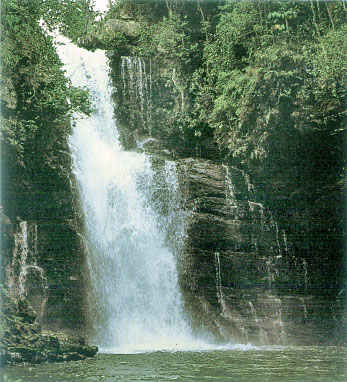 |
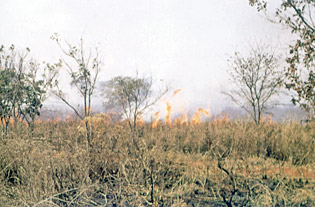 bush fires in cerrado |
ON:
Did you find a very devastated area? Did it suffer a lot with the mankind
occupation or there are habitats which are still intact? Lou: The soy beans, more specifically the implementation of agricultural projects, associated to an uncontrolled occupation of the lands by the invasion, became a disaster which menaces the existence of the "cerrado" itself, besides the pastoral activities. The establishment of protected environmental areas by the creation of parks and reserves tries to minimize the great environmental loses. |
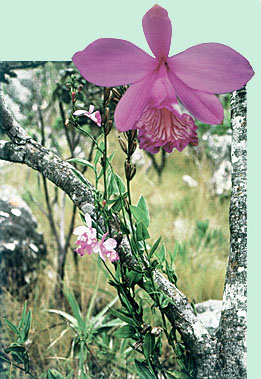
Epistephium lucidum . |
ON:
How many species have you registered? Lou: At about 200 species have been registered although there are not all included in the book. The high cost of my publications imposes restrictions concerning the number of pages. I have compiled a book at about 600 pages and I should reduce it to 304. ON: And the other species, will you publish it? Lou: The work will have to be completed in a subsequent edition. ON: Which genera have you came across in the Central Plateau? Lou: It is quite diversified. For example, in the book, only Epidendrum, I presented 10 species; Galeandra, 5 species; Oncidium, for instance, there are 8 species. There are Catasetum, Cycnoches, Mormodes, Pelexia, Notylia, Sarcoglottis, Lockhartia, Macradenia, Sobralia, Sophronitis, Sophronitella, Trichocentrum, |
Maxillaria, Cattleya
with an hybrid I have described Cattleya x mesquitae, included
a alba variety, Laelia and many others. |
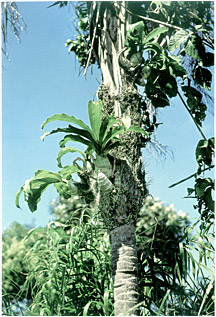 Catasetum sptizii (habitat) |
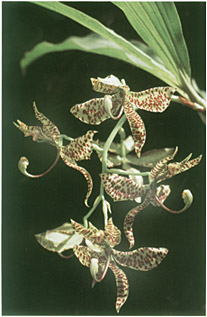 Cycnoches pentadactylum |
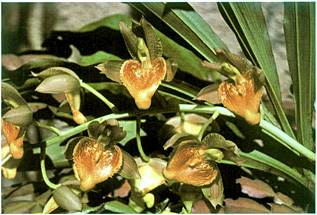
Catasetum x intermedium |
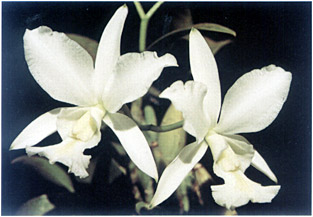
Cattleya x mesquitae var. alba |
|
|
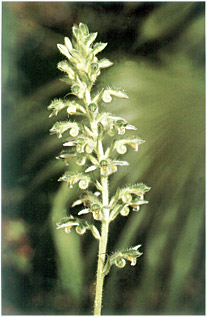 Pelexia pterygantha |
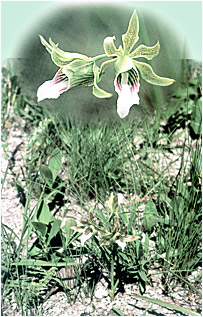
Galeandra paraguayensis |
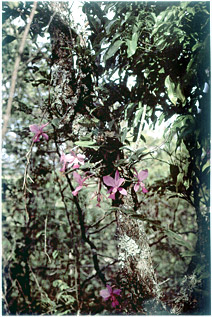
Cattleya walkeriana in the habitat |
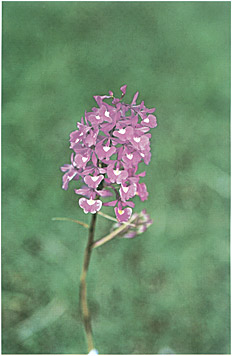 Epidendrum amblostomoides |
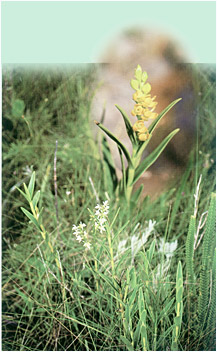 Epidendrum dendrobioides |
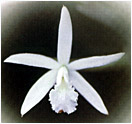
Laelia lundii var. alba |
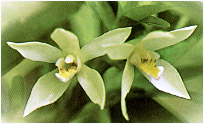
Maxillaria camaridii |
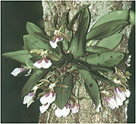
Trichocentrum albo-coccineum |
|
